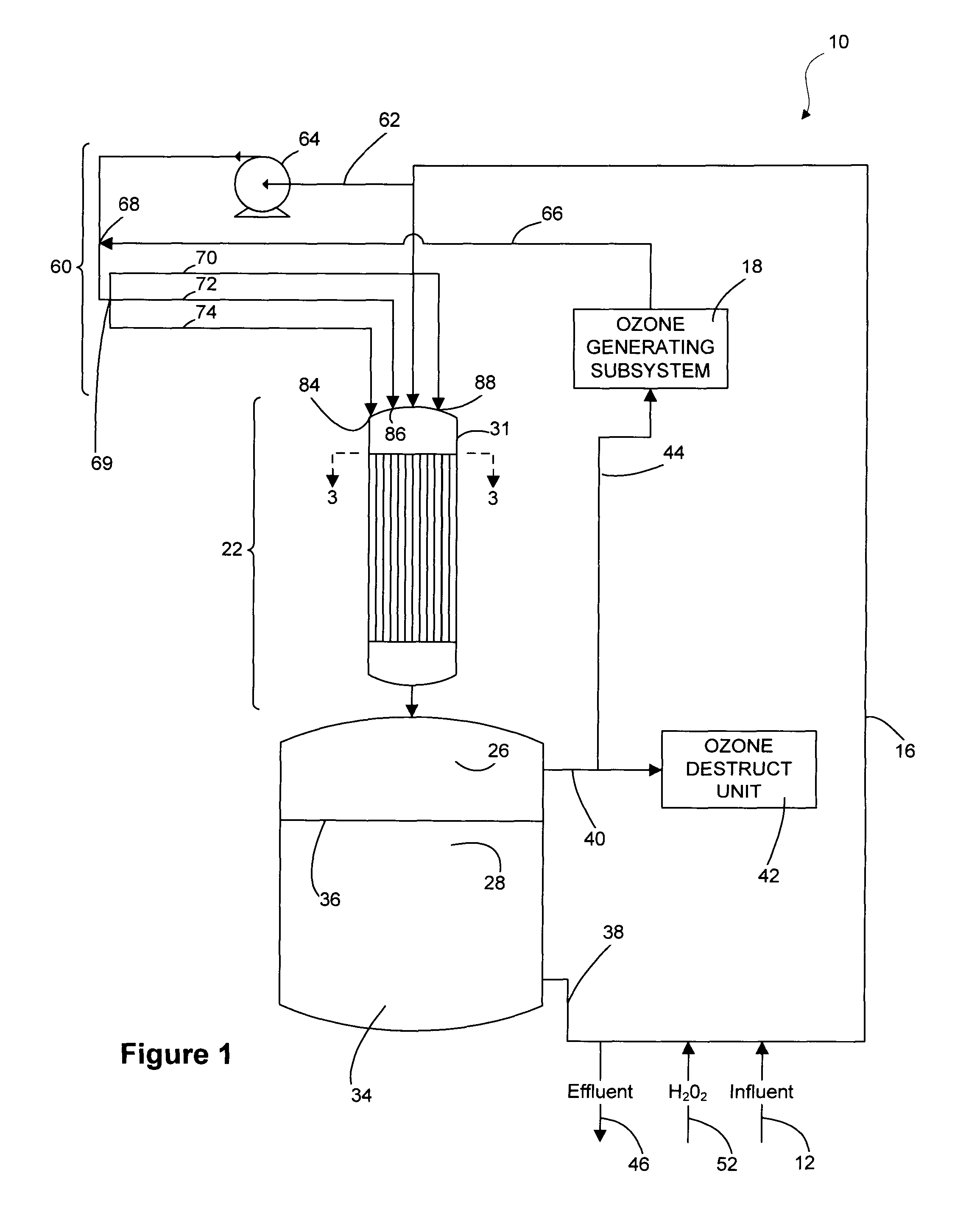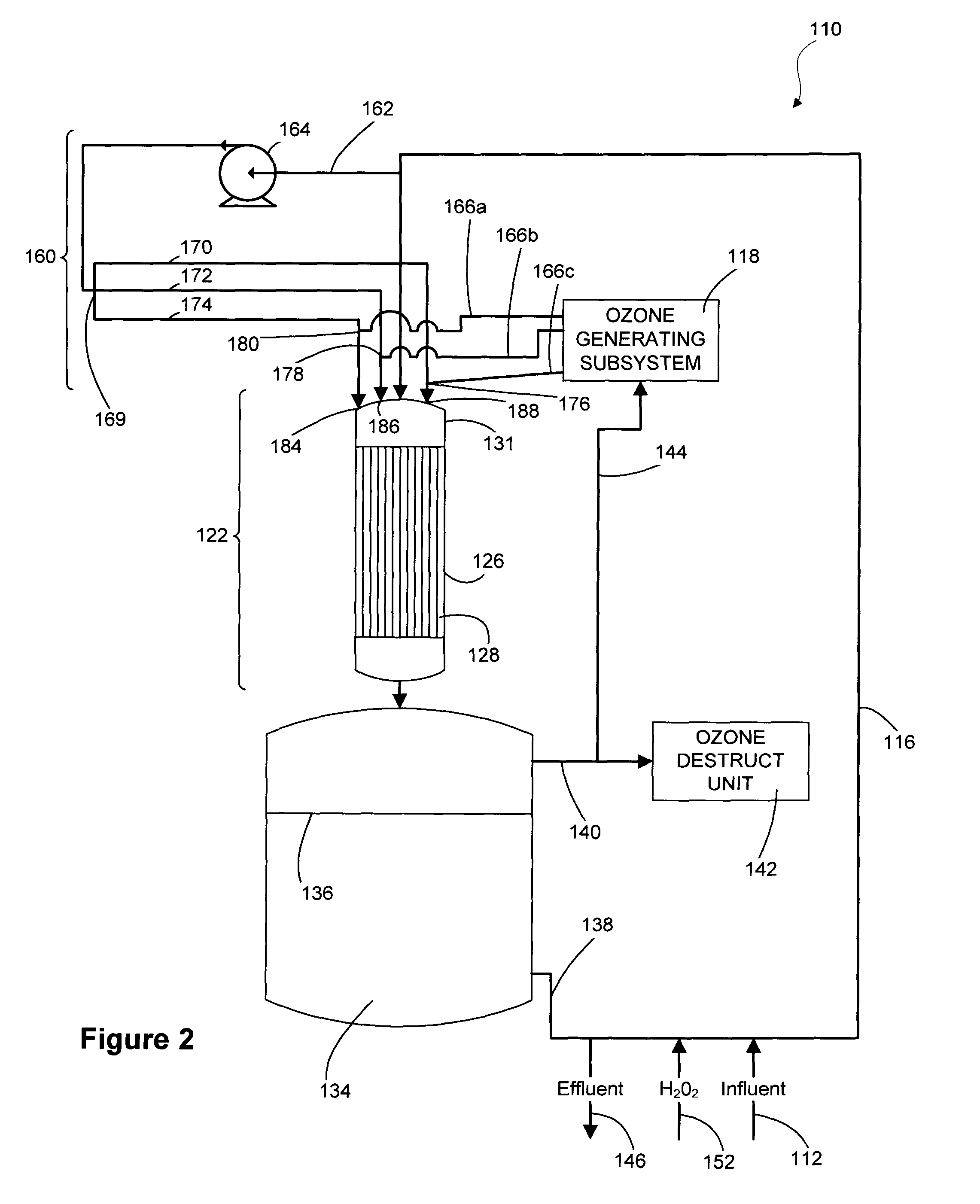Gas dispersion apparatus for improved gas-liquid mass transfer
a gas-liquid mass transfer and gas-liquid technology, which is applied in water/sewage treatment by degassing, separation processes, filtration separation, etc., can solve the problems of increasing the solubility of ozone in water, and faster rise of ozone for tertiary treatment of wastewater
- Summary
- Abstract
- Description
- Claims
- Application Information
AI Technical Summary
Benefits of technology
Problems solved by technology
Method used
Image
Examples
Embodiment Construction
[0037]Unless otherwise stated herein, any and all percentages identified in the specification, drawings and claims should be understood to be on a weight percentage basis.
[0038]Unless otherwise stated herein, any and all pressures identified in the specification, drawings and claims should be understood to mean gauge pressure.
[0039]As used in the specification and claims, the term “flow communication” is intended to mean that two or more elements are connected (either directly or indirectly) in a manner that enables fluids to flow between the elements, including connections that may contain valves, gates, or other devices that may selectively restrict fluid flow.
[0040]As used in the specification and claims, the terms “ozone transfer,”“ozone mass transfer,” and “ozone dissolution” are all intended to refer to the dissolution of ozone gas into water.
[0041]To aid in describing the invention, directional terms may be used in the specification and claims to describe portions of the pres...
PUM
| Property | Measurement | Unit |
|---|---|---|
| water flow rate | aaaaa | aaaaa |
| water flow rate | aaaaa | aaaaa |
| gas pressure | aaaaa | aaaaa |
Abstract
Description
Claims
Application Information
 Login to View More
Login to View More - R&D
- Intellectual Property
- Life Sciences
- Materials
- Tech Scout
- Unparalleled Data Quality
- Higher Quality Content
- 60% Fewer Hallucinations
Browse by: Latest US Patents, China's latest patents, Technical Efficacy Thesaurus, Application Domain, Technology Topic, Popular Technical Reports.
© 2025 PatSnap. All rights reserved.Legal|Privacy policy|Modern Slavery Act Transparency Statement|Sitemap|About US| Contact US: help@patsnap.com



